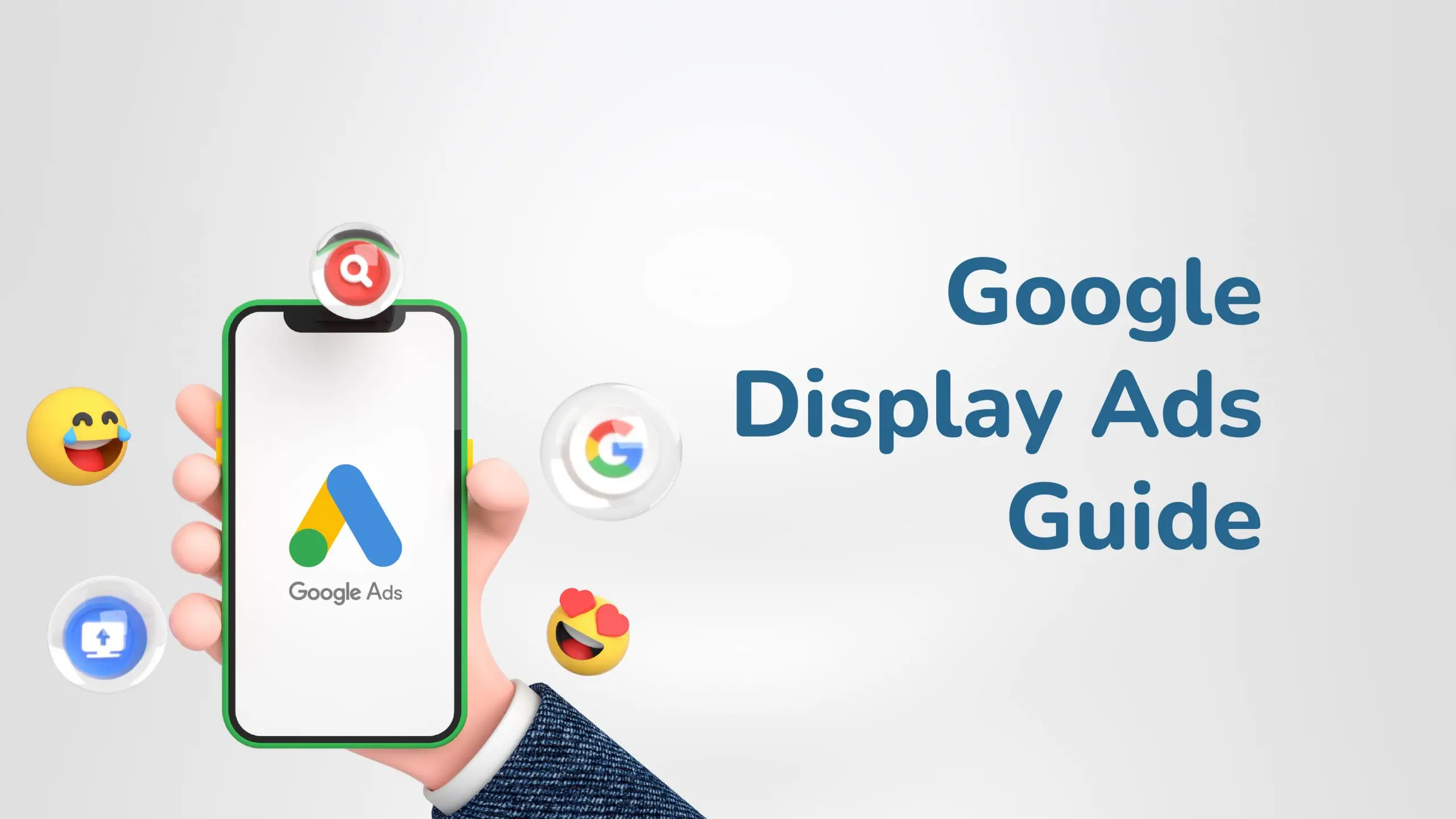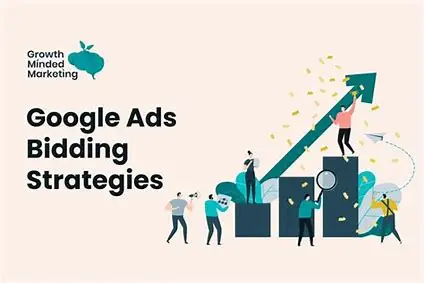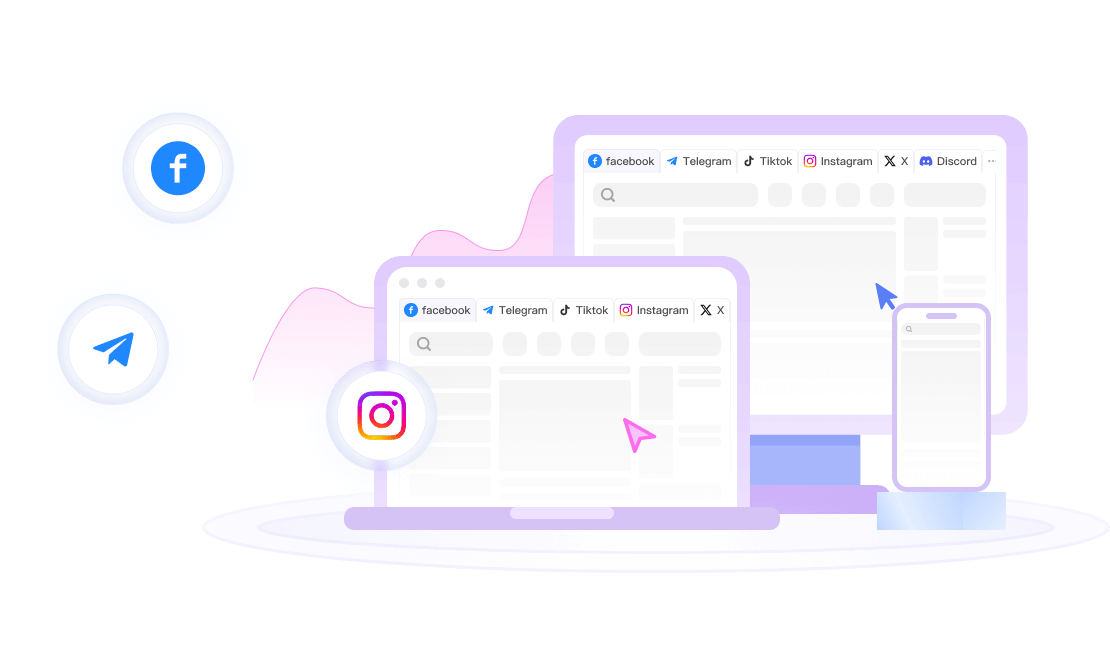For many startups and local service providers, the biggest hurdle to launching a Google Ads campaign isn’t a lack of creativity or strategy, but a seemingly simple matter of “money.” A small budget often feels like a red flag, signaling, “You can’t play this game.” But is that really the case?
An experienced Google Ads agency manager offers a resounding “no!” “I’ve run successful campaigns for clients with tiny budgets as little as $100 per month when I first started my agency,” he explains. This isn’t a fantasy; it proves a critical point: the key to success isn’t how much you spend, but how intelligently you spend what you have. With limited funds, you can’t drown the competition with a tidal wave of data like big corporations. Instead, you can win by being more strategic, more precise. This article will reveal six core strategies to help you secure victory on the Google Ads battlefield, even with limited capital.

Go Vertical: Focus on a Single Campaign Type
When you create a new campaign in Google Ads, you’re presented with a dizzying array of options: Search, Display, Shopping, Performance Max… For a small-budget advertiser, the worst mistake is trying to do it all.
Why? Because data fragmentation is the enemy of optimization. Google’s smart algorithm (and your own judgment) needs sufficient, timely data feedback to work its magic. Imagine you have only a few hundred dollars per month to spend. If you spread it across Search, Display, and Shopping, the number of clicks each channel gets might be minimal. One conversion here, a few clicks from three days ago, a couple more this morning… this trickle of data is like trying to empty a swimming pool with a spoon—it’s incredibly inefficient. Neither you nor Google can learn and optimize effectively from it.
Therefore, with a small budget, you must commit to a single campaign type. My top recommendation is Search ads. It’s the most intuitive and user-intent-driven form of advertising, and the foundation for all other types. Even for e-commerce beginners, I suggest starting with Search, as it connects you directly with potential customers who are actively searching. While Google’s “Performance Max” sounds alluring with its promise of combining all channels, it’s like a “Swiss Army knife”—functional but not sharp. It needs a massive amount of historical data to train on and perform its best. For a new or small-budget account, it’s often like seeing through a fog, making results unpredictable. Remember, master a single-channel Search campaign first, then consider scaling and integrating.
Focus on Conversions: Promote Your “Star” Product or Service
Your business likely offers multiple products or services—a marketing agency might do SEO, content creation, and social media management. But at the start with a small budget, put away your “ambition” and concentrate all your fire on one product or service.
This logic is a natural extension of the first point: focus your data to achieve breakthroughs on a single front. Promoting multiple services at once scatters your conversion data, making it hard to judge what’s working with keywords and ad copy and how to optimize. By focusing on a “star” product, you get clear, concentrated feedback, allowing you to find a profitable model much faster.
So, how do you choose “the one”?
- If You Have Data: Look at your past advertising data or other marketing channels (like Facebook, Instagram). Find the product or service with the highest ROI (Return on Ad Spend) or the lowest CPL (Cost Per Lead). It’s your “ace in the hole” for this campaign.
- If You’re a Beginner: If you’re new to ads and lack historical data, focus on your highest-value service. The core of advertising profitability is: Customer Lifetime Value > Customer Acquisition Cost. Higher-value services naturally have a higher LTV, giving you more room for error. For example, a $500 project can be profitable even with an $80 acquisition cost (much higher than a $50 product’s $20 cost), while a $500 project’s acquisition cost is unlikely to be 10x that of the $50 product. This makes profitability much easier to achieve.
Once the product you’ve focused on proves profitable with a small budget, you have valuable “ammunition” and experience. You can now scale investment in that product and reinvest those profits into testing other products, gradually building your portfolio.
Strike with Precision: Narrow Your Geographic Footprint
Local businesses (gyms, dental clinics, cleaners) especially need to pay attention to this. Many local advertisers ambitiously want to package their services as a “delicacy for the whole city,” ads targeting an entire region. This is a massive strategic blunder for a small budget.
The essence of a small budget is “concentrate your forces and defeat the enemy piecemeal.” If you run a gym in Oxford with a new, top-tier, massive-capacity branch, your primary target users are local Oxford residents. Instead of broadcasting to the whole of the UK and “sprinkling your budget,” geographically target just Oxford City or create a reasonable radius (e.g., 10 miles) around your gym.
The benefits are obvious: improve CTR and conversion rates. When an Oxford resident searches “gym in Oxford,” if your ad headlines, descriptions, and keywords all seamlessly integrate “Oxford,” your ad will feel highly relevant and attract clicks. Conversely, a user from Leeds would find the ad irrelevant. This high relevance not only lowers your CPC on wasted clicks but, more importantly, it attracts genuinely interested, qualified customers, significantly boosting your conversion rate. A high-converting ad is a sustainable, profitable ad. Succeed in Oxford first, then use those profits to conquer the next city—that’s smart expansion.

Strategic Keyword Selection: Prioritize Less Expensive Keywords
With a limited budget, every click is precious. Therefore, in keyword selection, we need to temporarily set aside high-end brand names or core industry keywords and focus on more cost-effective “mid-tail” keywords.
In Google Keyword Planner, you can easily see the “Top of page bid (high range)” estimate for each keyword. This number largely reflects the competition level. Browse the list for your industry, and you’ll find huge price variations. For example, for gardening services, “Landscaping Company near me” might cost £391, while “Weed treatment for lawn” might be just over £1.
The wise move is to prioritize keywords on the lower end of the price scale. Saving money means getting more clicks for the same budget. More clicks mean more data; more data means you and Google can learn and optimize faster. A campaign with only 5-6 clicks a day is vastly different from one with 15-20 clicks a day in terms of learning and optimization speed.
Of course, this is a “starter” tactic. Inexpensive keywords often have lower conversion rates or lower customer value—that’s precisely why they’re cheap. The goal with a small budget is to “get on the bus, then choose your seat.” We first use low-cost keywords to quickly validate if the entire ad model is viable. Once profitable and ready to scale, we then gradually add more expensive keywords that attract higher-value customers.
Pre-Qualify with Ad Copy: Set a Barrier to Filter Your Budget
Google Ads pays by CPC (Cost Per Click), meaning you only pay for ad placements when someone actually clicks. This is a godsend for small-budget advertisers. We should fully leverage this by proactively setting up a “barrier” in our ad copy to filter out visitors who are unlikely to become customers.
This sounds counterintuitive. How can saving money involve getting fewer clicks? The truth is, you don’t want “more clicks”; you want “more qualified clicks.” An irrelevant click might only cost you $2-$5 and leave a hint of regret, while a click from an unqualified prospect can waste $5-$20 and yield nothing. For a small budget, the latter is fatal.
So, how do you pre-qualify in your ads?
- Price Filter: State your service price directly in the ad. For a high-end gardening service, a headline could say “Starting from £500 per month.” This price will immediately deter budget-conscious customers; they won’t click, saving you that spend. Meanwhile, the customers attracted by this price are highly likely to be your target audience.
- Audience Filter: If your service is for a specific demographic, like “Perfect for 65 Plus” or “Premium Dog Grooming for Labradors,” state it boldly in the ad.
- Location Filter: In addition to geo-targeting in the backend, you can further reinforce location in ad titles, like “West Oxford’s Premier Gym,” to strengthen relevance for local users.
You can even “pin” a qualifying headline in your ad group settings to ensure it always appears in position one. Note, this method will reduce your overall CTR because it filters out a large portion of the audience. But what you get in return is an extremely high conversion rate, thus optimizing your Conversion Rate from Click, which is crucial for maintaining and improving your Quality Score. For a small budget, an activity that spends $10 to get one high-quality lead is far more valuable than one that spends $10 to get 10 useless clicks.
Optimize Aggressively: Be Proactive and Timely
With a large budget, advertisers can afford to wait for an ad group or keyword to reach “statistical significance” before deciding to keep or kill it. This is like a big corporation trading time for certainty.
But small budgets can’t afford to play the “waiting game.” Your budget doesn’t allow for continuously burning money on an underperforming keyword or ad creative. Therefore, your optimization strategy must be aggressive and proactive.
When a keyword’s performance (e.g., Conversion Value / Cost) is significantly worse than others, don’t wait until it has burned through half your budget with no signs of life. If you can sense it’s “dragging you down,” turn it off immediately and reallocate that precious budget to the “star performers” who are doing the heavy lifting.
Data is your only guide. Constantly monitor your ad account reports, identify your top-performing “stars” and your worst-performing “laggards.” With a small budget, a campaign with an ROI of 3.1 might be modestly profitable, but if another campaign with a 4.5 ROI is starving, you must “amputate” the limb and shift resources. While this “quick cut” optimization might seem a bit “hasty,” it ensures every dollar you spend is maximized for efficiency and profit, accumulating the original capital needed for subsequent scaling.
For advertisers managing multiple accounts, executing this kind of rapid iteration and optimization is where FlashID also proves to be an invaluable tool. Imagine you’re a digital marketing agency managing Google Ads for several local gyms, or you’re running A/B tests for different brands. With FlashID, you can create completely separate digital identities for each client and each test account.
Parallel Testing & Optimization: When you pause an underperforming keyword for Client A in Chrome Tab 1, the optimization work for Client B in Chrome Tab 2 can proceed completely undisturbed. This physical isolation ensures your operations don’t get muddled due to cross-browser activity, preventing costly mistakes from data loss or account risk.
Efficient Management: During the process of rapid iteration, you need to shuttle between multiple accounts. FlashID’s tab-syncing feature allows you to switch seamlessly between different strategies within a single account while ensuring data consistency, dramatically improving your efficiency when managing multiple small-budget accounts. It lets you focus all your mental energy on the core of analysis and strategy, rather than getting bogged down by tedious management tasks.

Frequently Asked Questions (FAQ)
Q: The article mentioned the key to small-budget success is “spending smartly.” For a beginner, where should they allocate their budget for the first step?
A: The first step should be on brand keywords or highly relevant “transactional” keywords. For example, if you offer yoga classes in New York, start with something like “yoga classes NYC.” These keywords have less competition and clear user intent, helping you quickly build initial conversion data in your ad account for future optimization.
Q: Besides Search ads, are there other viable ad channels for advertisers with extremely low budgets (e.g., $5-$10 per day)?
A: Google Maps Ads or Bing/Yahoo Ads are two excellent alternatives. For local businesses, Map Ads appear directly next to map search results with extremely high intent and usually have less competition than Google Search. Bing/Yahoo, while having smaller traffic volume, generally has lower ad prices and sometimes a different user demographic, making it a good low-cost channel for testing and expansion.
Q: When implementing “ad copy pre-qualification,” if the set barrier is too high, leading to too few clicks overall, won’t Google consider my ad to be of poor quality and thus increase my CPC?
A: This is a very professional and valid concern. Low CTR can indeed negatively impact your Quality Score. Therefore, the key is “moderate filtering.” Instead of writing “Starts at $500,” you could write “Premium Professional Service” or imply your expertise in the description to attract high-value clients. The core goal is to improve the Conversion Rate from Click, not just the Click-Through Rate.
Q: How often should I optimize my small-budget ads? Is it better to do it daily, weekly, or can I wait longer?
A: For small budgets, frequency should be higher; aim to check and optimize at least once a week. You need to tend to every “plant” (keyword, ad creative) like a gardener, pruning the withered branches as soon as you spot them. Every wasted spend could mean missing a valuable conversion opportunity.
Q: If my business is e-commerce, how can I apply these small-budget strategies, especially in conjunction with the “focus on one product” principle?
A: For e-commerce, you can choose a “loss-leading star product.” This product itself might have low profit margins but is highly attractive, capable of bringing a large volume of visitors and first-time purchases to your store for a low cost. Your goal is to use this product to break the ice, build customer trust, and collect a remarketing list. Then, use “Lookalike Audiences” and remarketing strategies to promote your higher-margin products to these visitors.
Q: Is video content (e.g., running ads on YouTube Shorts) helpful for small-budget promotion?
A: This is a high-risk, high-reward strategy. Short videos can explode a brand virally in a short time, but they can also burn through your budget just as quickly. If your budget is extremely low (e.g., <$10/day), it’s advisable to put all resources into Search ads, which have a more direct conversion path. Unless you have a specific, small-scale viral video concept, it’s generally not recommended for a tiny budget.
Q: How should I set a reasonable “daily budget” to start my Google Ads campaign?
A: Start with the maximum amount you are “comfortably willing to lose.” If you’re okay with losing up to $10 a day, set a $10 daily budget. The key is to treat it as a “tuition fee.” The goal isn’t immediate profit but to validate your product and market for the smallest possible cost. Once a profitable model is found, gradually increase the budget.
Q: In the “aggressive optimization” strategy, how many clicks or conversions do you think are needed for a keyword to be deemed “not worth continuing to run”?
A: For a small budget, this threshold will be very low. For example, if a keyword has received 10-15 clicks without any conversion, while a similar keyword is already generating 1-2 conversions in the same period, it might be a candidate for “elimination.” With a small budget, we don’t have the luxury of waiting time; we must favor those with a glimmer of initial success over those showing no promise.
Q: Besides the six points mentioned in the article, what other easily overlooked but crucial techniques are there for small-budget advertisers?
A: Meticulously use “Negative Keywords.” Regularly check your Search Terms Report and add irrelevant terms that are generating clicks (like “free,” “tutorial,” “DIY”) to your negative keyword list. This can immediately lower your CPC and improve conversion rates, making it an extremely high-ROI optimization action.
Q: When my small-budget ad campaign becomes profitable, how should I safely and effectively scale it up?
A: Scaling should follow the principle of “replicating success” and “incremental increases.” ① Replicate Success: If your “Oxford Gym” campaign succeeded, don’t just double the budget. Instead, duplicate the successful campaign and adjust the target location to “Cambridge,” testing the new market with the same strategy. ② Incremental Increase: Within a proven ad group, don’t triple the budget overnight. First, increase it by 25%-50%, observe for a week to ensure ROAS doesn’t drop, then continue to raise it gradually. Simultaneously, allocate the incremental budget to new, high-potential keywords, and place high-performing keywords into a “Standard Shopping” campaign to let Google’s automated bidding handle the scaling.
You May Also Like


